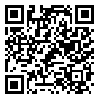Thu, Jul 17, 2025
[Archive]
Volume 5, Issue 1 (March 2009)
IJEEE 2009, 5(1): 51-59 |
Back to browse issues page
Download citation:
BibTeX | RIS | EndNote | Medlars | ProCite | Reference Manager | RefWorks
Send citation to:



BibTeX | RIS | EndNote | Medlars | ProCite | Reference Manager | RefWorks
Send citation to:
A. Dastfan, F. Behrangi. Design and Simulation of a New DC Power Supply Based on Dual Bridge Matrix Converter . IJEEE 2009; 5 (1) :51-59
URL: http://ijeee.iust.ac.ir/article-1-115-en.html
URL: http://ijeee.iust.ac.ir/article-1-115-en.html
Abstract: (10843 Views)
A conventional high power DC power supply systems consist of a three-phase
diode rectifier followed by a high frequency converter to supply loads at regulated DC
voltage. These rectifiers draw significant harmonic currents from the utility, resulting in
poor input power factor. In this paper, a DC power supply based on dual-bridge matrix
converter (DBMC) with reduced number of switches is proposed. In the proposed circuit,
three switches convert the low frequency AC input to a DC link. A single-phase bridge
inverter converts the DC-link to a high frequency AC output. The output of the matrix
converter is then processed via a high frequency isolation transformer and rectified to the
regulated DC voltage. In the proposed topology only a simple voltage control loop ensures
that the output voltage is regulated against load changes as well as input supply variations
and the current control loop is not used to correct the input currents. Theory analysis and
simulation are made to investigate performance of the proposed circuit. Simulation results
show that in the proposed power supply with 7-switch, the input currents are of a high
quality under varying load conditions and input voltage.
Type of Study: Research Paper |
Received: 2009/03/16 | Accepted: 2009/03/16
Received: 2009/03/16 | Accepted: 2009/03/16
| Rights and permissions | |
 |
This work is licensed under a Creative Commons Attribution-NonCommercial 4.0 International License. |







